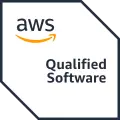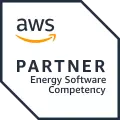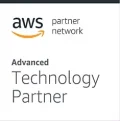Beyond the Buzzwords: What to Actually Look for in Energy Tech.

From Problem to Platform: How Energy Leaders Choose Software That Actually Delivers
The second in a four-part guide for energy leaders navigating the full buyer journey.
Once you’ve named the problem, the next logical step is to look for solutions. But if you’ve been through this before, you know it can be overwhelming. A quick search pulls up a sea of vendors, platforms, and acronyms. All promising amazing things; “digital transformation,” “automation,” and “innovation.”
The reality? Much of it is just lipstick on legacy. Systems that look modern on the outside but still rely on rigid architecture, slow upgrades, and vendor dependency.
Where Buyers Get Stuck.
Questions at this stage often include:
- “What types of solutions solve my problem?”
- “Is there anything that could change how we approach this?”
- “How do I compare such different offerings?”
Unfortunately, many solutions look identical until you’ve spent months (and significant budget) discovering their limitations.
The Cloud-Native Difference.
Not all platforms are created equal. A truly cloud-native platform is fundamentally different from “cloud-hosted” systems that have simply been lifted into the cloud without rethinking how they work.
- Born in the cloud architecture: Designed from day one for flexibility, scalability, and remote access.
- High configurability: Adapt allocation logic, workflows, or data models without expensive custom development.
- Always current: Upgrades and enhancements roll out automatically without disruption, version lock-in, or downtime.
- Built-in data agility: Import, transform, and report on data from multiple sources without complex ETL pipelines.
Spotting the Pretenders.
- Long implementation timelines measured in months or years.
- Heavy reliance on custom code or external consultants.
- Rigid workflows that force you to adapt your operations to the software.
- Integrations that “technically work” but crumble under load.
Questions to Ask Vendors.
- “How fast can I change a workflow?”
- “What happens when my operating model changes?”
A confident vendor will be able to demonstrate these answers, not just promise them.
From Exploration to Action.
One EnergySys client summed it up perfectly:
“We weren’t just looking for software. We were looking for something that would stop getting in the way.”
That’s the power of technology that adapts to you, instead of forcing you to adapt to it.
In Requirements Building, we’ll explore how to write specifications that reflect what’s possible — and avoid baking in the limitations you’re trying to escape.








